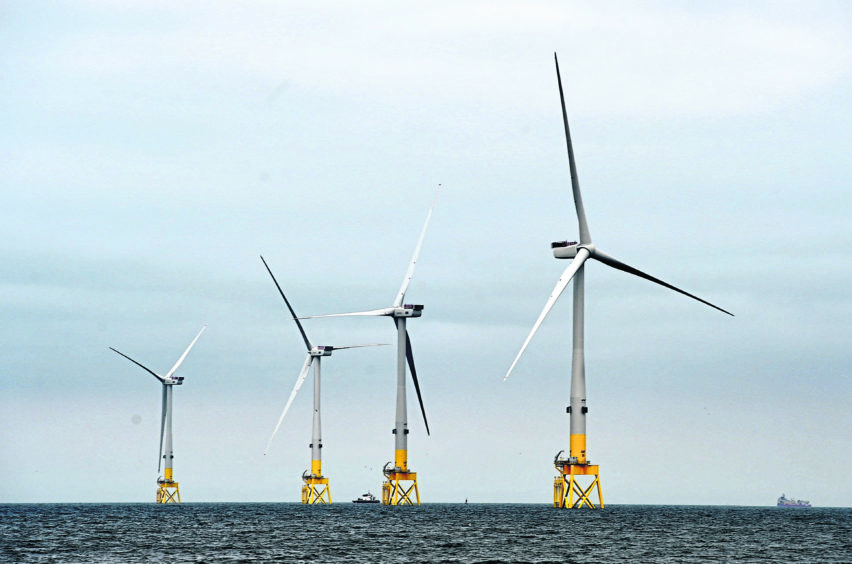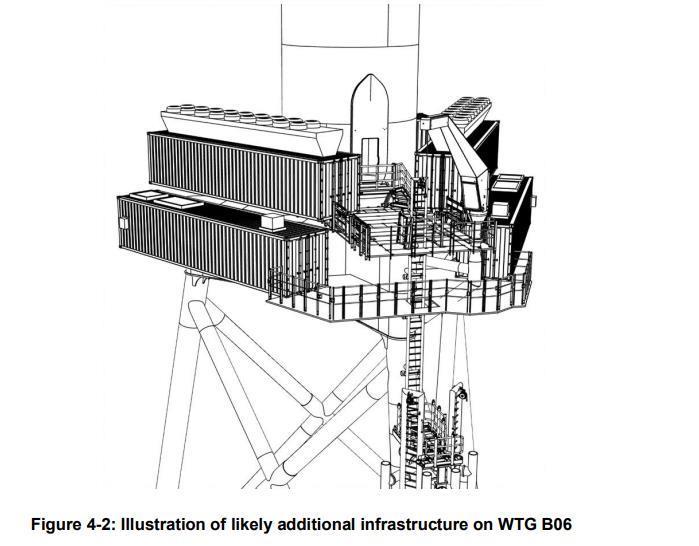
Vattenfall has been awarded £9.3 million in UK government funding to add green hydrogen production facilities to a turbine at the Aberdeen Offshore Wind Farm (AOWF).
The funding will be used to help progress the “world-first” project, which will see an electrolyser sited directly onto an existing operational turbine.
The Hydrogen Turbine 1 (HT1) pilot project will reportedly be able to produce enough hydrogen every day to enable a hydrogen bus to travel 15,000 miles.
AOWF – also known as the European Offshore Wind Deployment Centre (EOWDC) – lies just off the north east coast in Aberdeen Bay. It was completed in 2018 and has an installed capacity of 96.8 MW, comprised of eleven 8.8-MW turbines.
Proposals for the project first surfaced late last year, and showed plans to install hydrogen generating equipment on an extended transition piece platform at turbine B06, on the site’s north east side.
The proposals suggest the equipment – comprising an electrolyser, desalination facilities and compressors – will be housed in up to seven 40ft shipping containers mounted on the platform.
Desalinated seawater would be used as an input and – assuming maximum capacity from the 8.8-MW turbine – the site could produce up to 0.18 cubic metres of green hydrogen per hour.
Produced hydrogen will then be piped to shore at the Port of Aberdeen.
Work on the scheme has already commenced, Vattenfall said, with the goal of first production as early as 2025.
The project will test the full integration of a hydrogen electrolyser with an offshore wind turbine for the first time, the developer added, and show the real-time response to a variable power source.
It will also look at how fossil-free hydrogen can be produced safely offshore, and what needs to be done to speed up the regulatory process and enable large-scale commercial production more quickly.
Vattenfall UK country manager Danielle Lane, UK Country Manager said placing electrolysers offshore was likely to be “the quickest and cheapest way” of providing clean hydrogen at the scale required for decarbonising heavy industries.
“There’s a lot of talk about hydrogen’s potential uses, but we need to urgently map out the development and delivery processes so we can quickly get to the stage where we can produce large quantities of fossil-free hydrogen cost effectively. The HT1 project will focus on overcoming those barriers, in the real-world environment of an operational offshore wind farm,” she added.
The new funding has been awarded by the £1bn Net Zero Innovation Portfolio’s low-carbon hydrogen fund, overseen by the Department for Business, Energy and Industrial Strategy (BEIS).
Energy Minister Greg Hands said the scheme showed the UK was “truly leading the world in hydrogen innovation”.
“The government support which they have received today will help to boost the development of hydrogen as the clean, affordable, homegrown superfuel of the future,” he added.
Port of Aberdeen chief executive Bob Sanguinetti said: “This is a great development for the production and onshore use of green hydrogen and speaks volumes for the ingenuity and skills which Aberdeen has on its doorstep. This project will reinforce Aberdeen’s reputation as a leader for clean hydrogen production and will set the tone for the development of these sectors.”
Meanwhile, March also saw BP secure approval to become a joint venture partner of Aberdeen City Council to build Scotland’s first “scalable” green hydrogen production plant, as part of a bid to create a £215m hydrogen hub in the city.
 © Supplied by Vattenfall
© Supplied by Vattenfall